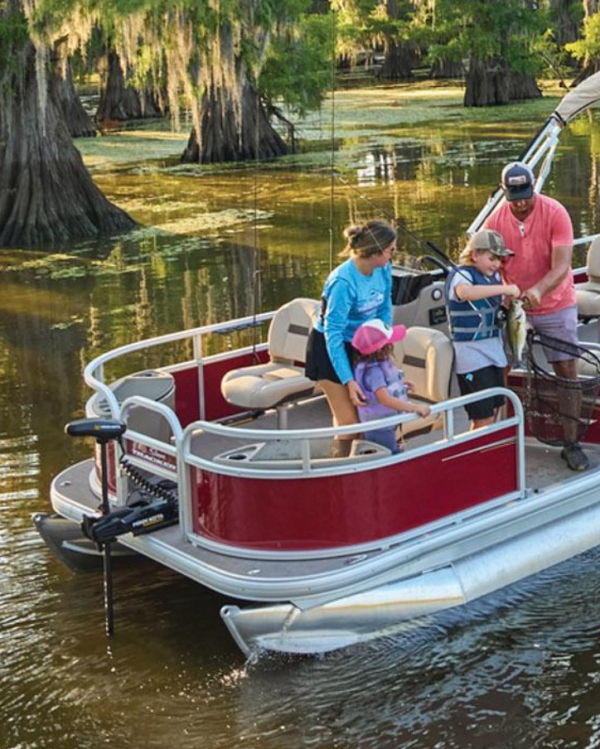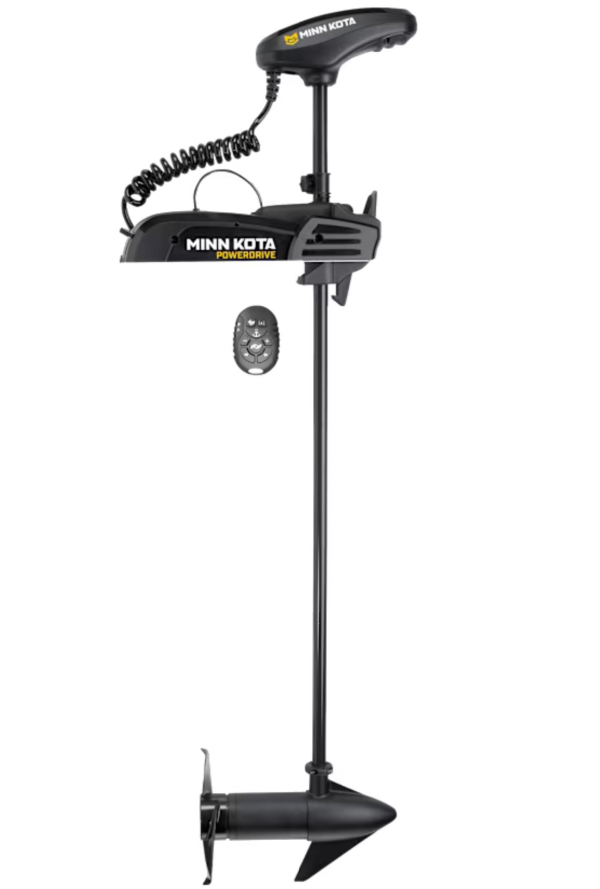
The ability to hold a boat in one spot without crashing an anchor overboard is central to a lot of fishing success, from keeping a bass boat at just the right distance to cast to a brushpile or dropoff to teasing spawning smallmouth off a rock to luring snook out from under a mangrove.
And while impressive inventions like John Oliverio’s Power-Pole in the late 90’s and Minn-Kota’s Talon shallow water anchors in the early 2000’s helped in water up to about 10’ deep, beyond that staying put meant constantly standing on the trolling motor pedal and continuously making adjustments—it was very difficult in a stiff wind.
That changed dramatically in 2010, when Minn Kota introduced a feature that would forever transform boat control—“Spot-Lock”, a wireless system linking their i-Pilot trolling motors to precision GPS for automatic position holding, with no input from the angler until time to move on.
It was one of those technological leaps that would forever change fishing, allowing more anglers to catch more fish than ever before.
Today, some form of position locking system is considered basic equipment on serious fishing boats. Bass anglers, saltwater inshore fishermen, and even crappie hunters on pontoon rigs depend on it to fish more effectively, more efficiently, and with far less effort.
There’s also a burgeoning market in offshore reef fishing, where extreme long-shaft motors, to 110” max, needed to keep the prop in the water from a high-bow offshore boat, are used to hold position over grouper/snapper reefs with no need for handling hundreds of feet of heavy anchor line.
Motor-Guide, an early competitor of Minn Kota, soon came out with position-holding of their own, though that company branding, owned by Brunswick, was quietly dropped last year as the company put all their new technology into Lowrance/Simrad branded trolling motors—all with a version of position-locking. Garmin and Power-Pole’s Move trolling motors also have it, as does the Rhodan series.
How Spot-Lock Works
Spot-Lock is a digital anchor. The system uses a high-sensitivity GPS receiver and integrated software to constantly track the boat’s position. When you hit the Spot-Lock button—on the foot pedal, remote control, or a connected fishfinder—the system records your exact coordinates.
From there, the trolling motor automatically makes subtle adjustments, turning the shaft and adjusting thrust to counter wind, waves, or current. The corrections are constant, but seamless. Instead of the angler compensating every 30 seconds, the motor does it dozens of times a minute.
The result is remarkable: your boat stays on the sweet spot, whether that’s a shell bar in a bass reservoir, a grass flat in Tampa Bay, or a brush pile in a crappie lake.

Expanding to Saltwater
Saltwater anglers also depend on spot-locking trolling motors, now more than ever since long-shaft, high-power motors have evolved to allow locking position over offshore reefs where grouper and snapper hang out. The huge advantage offshore is that there’s no need to handle hundreds of feet of anchor line repeatedly in trying to get the boat positioned just right—just click the “anchor” button and the motor takes care of everything.
Inshore, holding position quietly can mean the difference between a hookup and spooking a school of redfish or snook. Tarpon fishermen love it for holding near bridges and passes where currents are ripping.
Crappie anglers—even those fishing from pontoons boats--can stop directly over brush piles, stake beds, or drop-offs and stay there indefinitely. This revolutionized spider-rigging and vertical jigging, making pontoon fishing as precise as fishing from a conventional crappie or bass rig.
Spot-Lock Competitors
The big edge Minn Kota has maintained on other brands—Garmin, Lowrance and PowerPole Move—is that they offer Spot Lock at multiple price points rather than only on their high-end 24 and 36 volt models.
The least expensive spot-locking model from Minn Kota, the PowerDrive series, starts at $1350, at least $2000 less than the others with positioning tech. While this is for a 12-volt model producing 55 pounds of thrust, that’s more than enough for many recreational users, and you don’t have the expense of buying a second or third battery for a 24- or 36-volt system. (The company also offers high-end Spot-Lock motors in their Ultrex, Ulterra and Terrova series motors.)
I recently put a 12-volt/55 PowerDrive on a 20-foot Bass Tracker pontoon—a surprisingly easy install in about an hour--and it’s plenty of power, even in brisk winds, to hold position. I mounted the motor on Minn Kota’s Quick Release Plate, so that the motor can easily be slid off and left at home when towing a tube or picnic cruising is the mission.
One of the features I immediately appreciated is the ability to control the motor from anywhere on the boat with the key fob remote, so that when I’m “grandpa guiding” as I often do, the kids can cast from up front while I keep my head down sitting at the console.
Plus there’s no need to stay up front so you can keep your foot on the control pedal when you’re fishing solo. And if you want to walk back to the cooler for a cola, the system keeps you pegged, right on the hotspot, while you take a break.

PowerDrive motors integrate nicely with Humminbird electronics via the One-Boat Network. That connection allows anglers to mark a brush pile on their sonar screen and immediately Spot-Lock on it with a single button press. You can also, with a couple of adapter cables, hook up Garmin or Lowrance GPS/sonar screens, though they won’t have the ability to navigate directly from the screen like the late model Humminbird models do.
All things considered, the Minn Kota PowerDrive and other position-locking motors are a darn good investment in allowing you to fish more effectively and also in giving a much more relaxing time on the water.
Learn more about Minn Kota PowerDrive motors here: https://minnkota.johnsonoutdoors.com.
— Frank Sargeant
Frankmako1@gmail.com